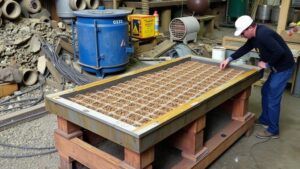How to Design Small-Scale Pressure Oxidation Reactors for Refractory Gold
Designing Small-Scale Pressure Oxidation Reactors for Refractory Gold
The extraction of gold from refractory ores poses significant challenges, primarily due to the encapsulation of precious metal within sulfide minerals. Pressure oxidation processes provide an effective solution by enhancing gold recovery, leveraging high temperature and pressure to oxidize sulfides. This article explores the design considerations for small-scale pressure oxidation reactors tailored specifically for refractory gold ores.
Understanding Refractory Gold
Refractory gold is typically found in ore with sulfide minerals, which can hinder traditional cyanidation methods. extraction of gold from these ores requires pre-treatment such as roasting, biooxidation, or pressure oxidation. Pressure oxidation (POX) has gained traction as an efficient method due to its ability to oxidize sulfides at high temperatures and pressures, facilitating the subsequent leaching of gold.
Key Design Considerations
Designing a small-scale pressure oxidation reactor requires careful attention to several critical parameters:
- Reactor Type: Common configurations include batch reactors and continuous flow reactors. A batch reactor may be suitable for small operations, while continuous systems can improve efficiency.
- Material Selection: High-performance alloys resistant to corrosion and wear are essential. Materials such as Hastelloy or stainless steel are frequently used.
- Temperature and Pressure Control: The reactor should maintain temperatures typically between 180-230°C and pressures of 200-400 psi. Effective insulation and pressure regulation systems are crucial.
- Agitation Mechanism: Well-designed agitation ensures uniform mixing of the ore and oxidizing agents, thus maximizing reaction kinetics.
- Instrumentation: Proper monitoring systems for temperature, pressure, and pH are vital for maintaining optimal operating conditions.
Reactor Design Process
The design process for a small-scale pressure oxidation reactor can be broken down into several sequential steps:
- Feed Analysis: Conduct thorough chemical and mineralogical analyses of the refractory gold ore to inform the appropriate design parameters.
- Thermodynamic Modeling: Use modeling software to simulate the oxidation process, identifying optimal temperature, pressure, and reagent conditions.
- Pilot Testing: Use a pilot-scale reactor to validate the design and operational dynamics, building confidence in the system before full-scale deployment.
- Scale-Up Considerations: Prepare for potential scale-up by designing modular components, facilitating easy addition of capacity as demand grows.
Case Studies and Real-World Applications
Several mining operations across the globe have successfully implemented small-scale pressure oxidation reactors. For example, a small gold mining company in Nevada utilized a 2-tonne batch reactor to process refractory ores, achieving an impressive 90% recovery rate of gold. This case illustrates not only the efficacy of pressure oxidation but also highlights the adaptability of small-scale reactors in addressing specific geological challenges.
Also, a pilot project in South America reported similar success with a continuous pressure oxidation system, achieving faster processing times while maintaining recovery yields above industry standards. This reinforces the notion that achieving efficiency in refractory gold processing is not solely a function of scale but hinges largely on thoughtful design and operational parameters.
Challenges and Solutions
Despite the advantages, several challenges accompany the design of small-scale POX reactors:
- Corrosion and Maintenance: The aggressive environment can lead to reactor wear. Regular maintenance schedules and the use of corrosion-resistant materials can mitigate these issues.
- Operational Safety: Maintaining safety standards under high pressure is critical. Incorporating safety valves and pressure relief systems is essential to prevent hazardous situations.
- Energy Consumption: High operational temperatures can result in significant energy costs. The integration of heat recovery systems can enhance overall efficiency and reduce energy expenditure.
Conclusion
The design of small-scale pressure oxidation reactors for refractory gold extraction is a complex yet rewarding endeavor. By understanding the specific requirements and challenges associated with refractory ores, engineers can create efficient systems that significantly enhance gold recovery rates. Careful selection of materials, thorough testing, and continual optimization will ensure the longevity and success of these valuable systems in the mining industry.
For those looking to implement or improve small-scale POX reactors, taking actionable steps such as conducting detailed feed analyses, investing in high-quality materials, and conducting pilot tests can lead to sustainable and profitable operations in refractory gold recovery.

